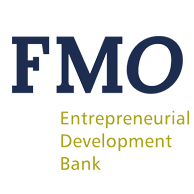

Evaluating 10 years of FMO’s Private Equity Fund investments (2008 – 2018)
Impact fund investing has gained prominence as an approach to investment with the intent to contribute measurable positive social or environmental impact, alongside a financial return. While not all fund investments have equal impact, continued development of the industry will improve the prospects for achieving the Sustainable Development Goals (SDGs).
This growing market provides opportunities for FMO to help overcome the uncertainty of non-impact investors on the potential for commercial returns of impact fund investment, build common standards covering what it means to manage for impact, improve the comparability of measured impacts across fund managers, and engage with governments to make the business environment more conducive to such fund investment. Additionally, current trends create expectations of greater potential for Private Equity Fund investments going forward, including the “Operating Principles for Impact Management”.
As a learning organization, we regularly assess the development impact of our investments and feedback the findings and recommendations into our strategic choices. Recently, FMO assessed the development results of mature investments in Private Equity Funds between 2008 and 2014, and discussed strategic and investment trends of more recent years (2014-2018). The study found that going forward, we will have to enhance our approach to investing in private equity funds in order to enhance our contributions to our core SDGs.
The evaluation recommendations are threefold:
Formulate a Standalone Strategy for Fund Investment
FMO needs to develop a more transparent strategic approach in terms of sector, fund sizes, and region / countries, in order to send clear signals to other players in the impact-fund market and to increase its reliability and attractiveness as “preferred partner to invest in local prosperity”. FMO’s fund strategy needs to reconcile clearly and realistically the directions of the FMO Strategy 2025, and take into consideration: (i) the unique indirect characteristics of fund investments (indirect, sector agnostic), (ii) the development priorities of the target countries of operation, and (iii) the Operating Principles for Impact Management. Additionally, this strategy should maximize the potential of funds for increasing FMO’s portfolio diversification and multiplier effects, for delivering financial and nonfinancial additionality, and for achieving development impacts in terms of the SDGs 8, 10 and 13 (FMO’s core SDGs).
Align the Organization with the Standalone Strategy
To optimize the allocation of staff (from investment, environmental, social, and corporate governance teams), to business development and portfolio management, the organization needs to align with: (i) the growing demands imposed by the standalone strategy document for fund; and (ii) an aging and low TVPI fund portfolio [1]. Sustain stronger support for innovation in terms of products, delivery mechanisms, and the corporate priorities, and tailor better risk capital allocation and ex-ante job estimation policies to the indirect characteristics of fund investments.
Improve Development Impact’s Measurement and Feedback Loops to Strategy and Operations
FMO needs to design and implement in the context of the “look through” initiative a results framework which includes relevant, complete, and good quality metrics, benchmarks with peer DFIs and impact investors, and evaluations at fund and investee-company levels. The evidence of financial and development impact results needs to feed back into fund and corporate strategies.
Jaap Reinking, Director Private Equity at FMO commented: “The study made clear that Private Equity Funds are an important asset class for FMO to catalyze a sustainable investment environment and to leverage private sector investment. The study sends a clear signal that we need to step-up our approach to capture better the indirect development impacts, and at the same time it confirms that fund investments do create significant direct and indirect positive development impacts. It also underpins a roadmap to further finetune the private equity fund strategy and to better capture the private equity fund contributions to meeting the SDGs by 2030.’
[1] The investment multiple is also known as the total value to paid-in (TVPI) multiple. It is calculated by dividing the fund’s cumulative distributions and residual value by the paid-in capital. This provides insight to the fund’s performance by showing total value as a multiple of its cost basis.